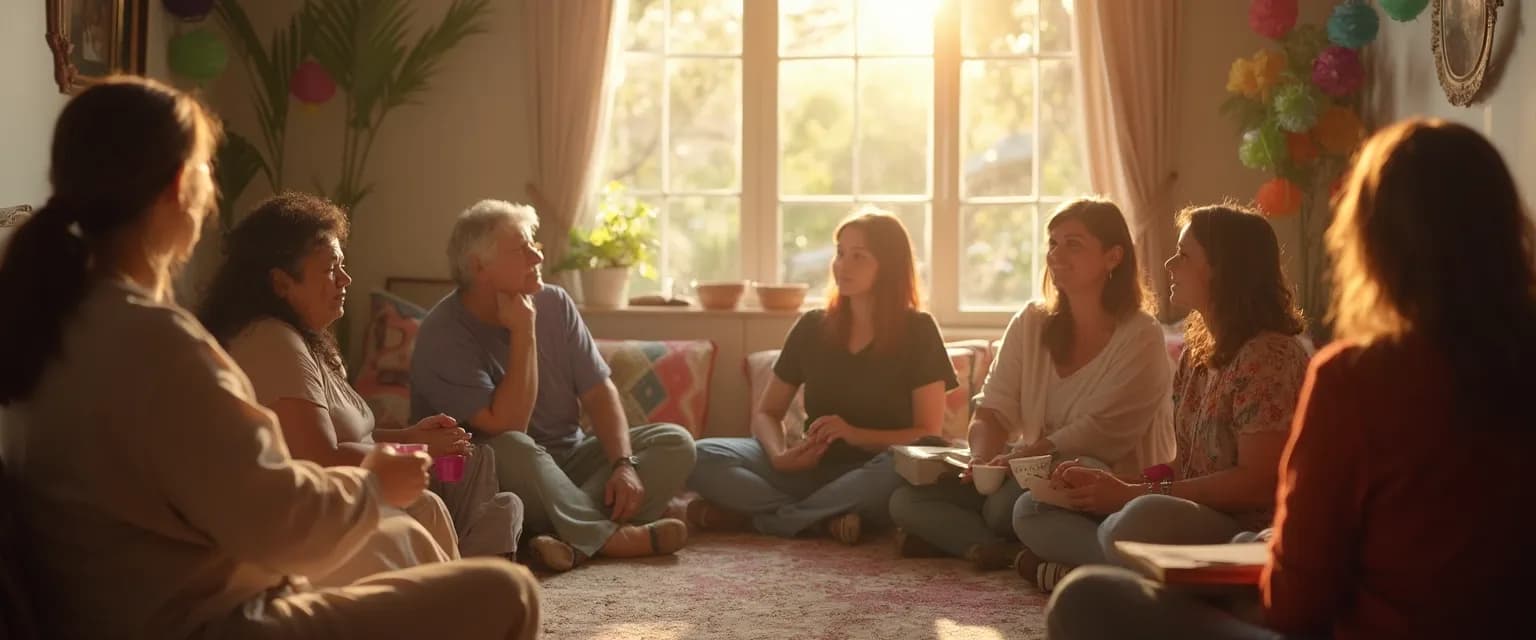7 Powerful Ways to Transform Grief Share Programs Into Community Healing Hubs
Grief is a universal experience, yet navigating the choppy waters of loss often feels isolating. Grief share programs offer a lifeline to those struggling with bereavement, providing structure and community during difficult times. However, many traditional grief support groups stop short of creating true healing environments. The difference between a standard grief share program and a transformative community healing hub lies in intentional design and implementation.
Research shows that processing grief in supportive group settings activates our brain's social connection networks, releasing oxytocin and reducing stress hormones. This biological response explains why effective grief coping strategies often involve community support. By enhancing existing grief share programs with evidence-based approaches, we can create spaces where authentic healing flourishes.
Let's explore seven transformative approaches that elevate grief share programs from support groups to genuine community healing hubs. These strategies create environments where participants don't just survive grief—they find pathways to meaningful growth through shared experience.
Creating Safe Spaces in Grief Share Programs: The Foundation of Healing
Psychological safety forms the cornerstone of effective grief share programs. When participants feel secure enough to express their authentic emotions without judgment, deeper healing becomes possible. Skilled facilitators establish this safety by modeling vulnerability and setting clear group agreements at the outset.
One powerful technique involves using "emotional validation circles" where facilitators explicitly acknowledge all expressions of grief—from anger to numbness—as normal and necessary. This validation creates permission for authentic sharing, which research shows accelerates the healing process.
The physical environment of grief share programs matters too. Consider arranging seating in circles rather than rows, using soft lighting instead of fluorescents, and providing comfort items like tissues, water, and stress-relief objects. These seemingly small details signal to participants' nervous systems that they're in a safe environment for emotional processing.
Structured yet flexible meeting formats provide another layer of safety. The best grief share programs balance predictable routines with space for organic connection, giving participants both security and freedom to process their unique grief journeys.
Innovative Activities to Enhance Grief Share Programs
While discussion forms the backbone of most grief share programs, incorporating diverse activities unlocks new pathways to healing. Creative expression through simple art projects allows participants to externalize feelings that may be difficult to verbalize. One effective technique involves "grief collages" where members assemble images representing both their loss and their emerging hope.
Mindfulness practices tailored specifically for grief offer another powerful dimension to grief share programs. Simple breathing exercises at the beginning of sessions help participants ground themselves in the present moment, creating capacity for emotional processing. The "grief breath"—inhaling acknowledgment of pain and exhaling compassion toward oneself—provides an accessible entry point even for mindfulness beginners.
Gentle movement activities complement the emotional work in grief share programs. Walking meditation, stretching circles, or even symbolic movement exercises help process grief that becomes stored in the body. These physical components acknowledge the whole-person impact of loss.
Digital tools can extend support between meetings, transforming weekly grief share programs into continuous healing communities. Private messaging platforms, resource libraries, and optional check-in prompts create touchpoints that sustain connection without overwhelming participants.
Building Lasting Community Through Transformed Grief Share Programs
The most effective grief share programs create ripples that extend beyond formal meeting times. By intentionally fostering peer connections, these programs become launching pads for enduring support networks. Facilitators can encourage this by occasionally restructuring small groups, hosting informal gatherings, and teaching self-compassion techniques that participants can practice together.
Transformed grief share programs also benefit the wider community by reducing isolation and building collective resilience. When participants experience healing, they often become compassionate supporters for others, creating a positive cycle of community care.
Implementing these enhancements doesn't require overhauling existing grief share programs completely. Start with one approach—perhaps improving the physical environment or adding a simple creative activity—and build from there. The key is intentionality: designing each element of grief share programs with the goal of creating not just support, but true healing and connection.
By transforming traditional grief share programs into vibrant healing hubs, we honor both the depth of loss and the human capacity for growth through community. These enhanced grief share programs don't just help people survive loss—they create spaces where participants discover new dimensions of connection, meaning, and even joy in the midst of grief's journey.




